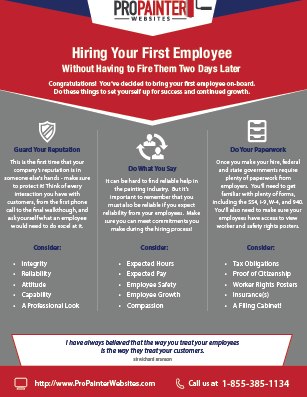Check Out The Role Of Seasonal Factors In The Success Of Commercial Outside Paint And Discover The Very Best Times To Secure Long-Term Results For Your Project
Check Out The Role Of Seasonal Factors In The Success Of Commercial Outside Paint And Discover The Very Best Times To Secure Long-Term Results For Your Project
Blog Article
Developed By-Korsholm Rodriquez
When you're preparing a commercial external paint task, seasonal variables can make or break your results. You'll want to take into consideration just how temperature and moisture influence paint application and drying times. Picking commercial painter minneapolis can ensure your paint adheres properly and lasts much longer. However which seasons are truly the very best for this sort of job? Allow's check out the crucial elements that can influence your job's success.
The Influence of Temperature Level on Paint Application
When you're planning a business exterior paint project, the temperature can significantly influence just how well the paint sticks and dries out.
Ideally, you wish to paint when temperature levels range in between 50 ° F and 85 ° F. If it's also cold, the paint may not cure appropriately, bring about issues like peeling off or cracking.
On the other side, if it's too hot, the paint can dry out too rapidly, stopping proper bond and leading to an irregular finish.
You ought to additionally consider the time of day; morning or late afternoon uses cooler temperature levels, which can be extra beneficial.
Constantly examine the producer's suggestions for the specific paint you're making use of, as they frequently offer advice on the excellent temperature array for optimal outcomes.
Humidity and Its Impact on Drying Times
Temperature level isn't the only environmental element that influences your commercial exterior painting task; moisture plays a substantial role also. High moisture degrees can slow down drying out times substantially, impacting the total high quality of your paint work.
When the air is saturated with moisture, the paint takes longer to cure, which can result in concerns like poor bond and a higher threat of mold development. If you're repainting on a specifically humid day, be prepared for extensive delay times between coats.
It's important to keep track of regional weather and plan as necessary. Preferably, aim for humidity levels in between 40% and 70% for ideal drying.
Keeping these factors in mind ensures your task remains on track and provides a long lasting surface.
Best Seasons for Commercial Outside Paint Projects
What's the very best time of year for your industrial external paint tasks?
Springtime and early autumn are usually your best options. Throughout these periods, temperatures are mild, and moisture levels are frequently lower, developing perfect problems for paint application and drying.
Prevent summer's intense heat, which can create paint to dry also rapidly, bring about inadequate attachment and coating. Similarly, visit the site can prevent appropriate drying out and curing, taking the chance of the durability of your paint task.
Go for days with temperatures in between 50 ° F and 85 ° F for optimal results. Bear in mind to inspect the regional weather report for rainfall, as damp problems can destroy your project.
Planning around these aspects ensures your paint job runs smoothly and lasts longer.
Final thought
Finally, preparing your commercial outside painting projects around seasonal factors to consider can make a significant distinction in the result. By scheduling job during the optimal temperatures and humidity levels, you'll guarantee much better adhesion and drying times. Keep in painting companies near me to keep an eye on local weather prediction and select the right time of year-- spring and very early autumn are your best options. Taking click over here will certainly assist you achieve a resilient and professional surface that lasts.
